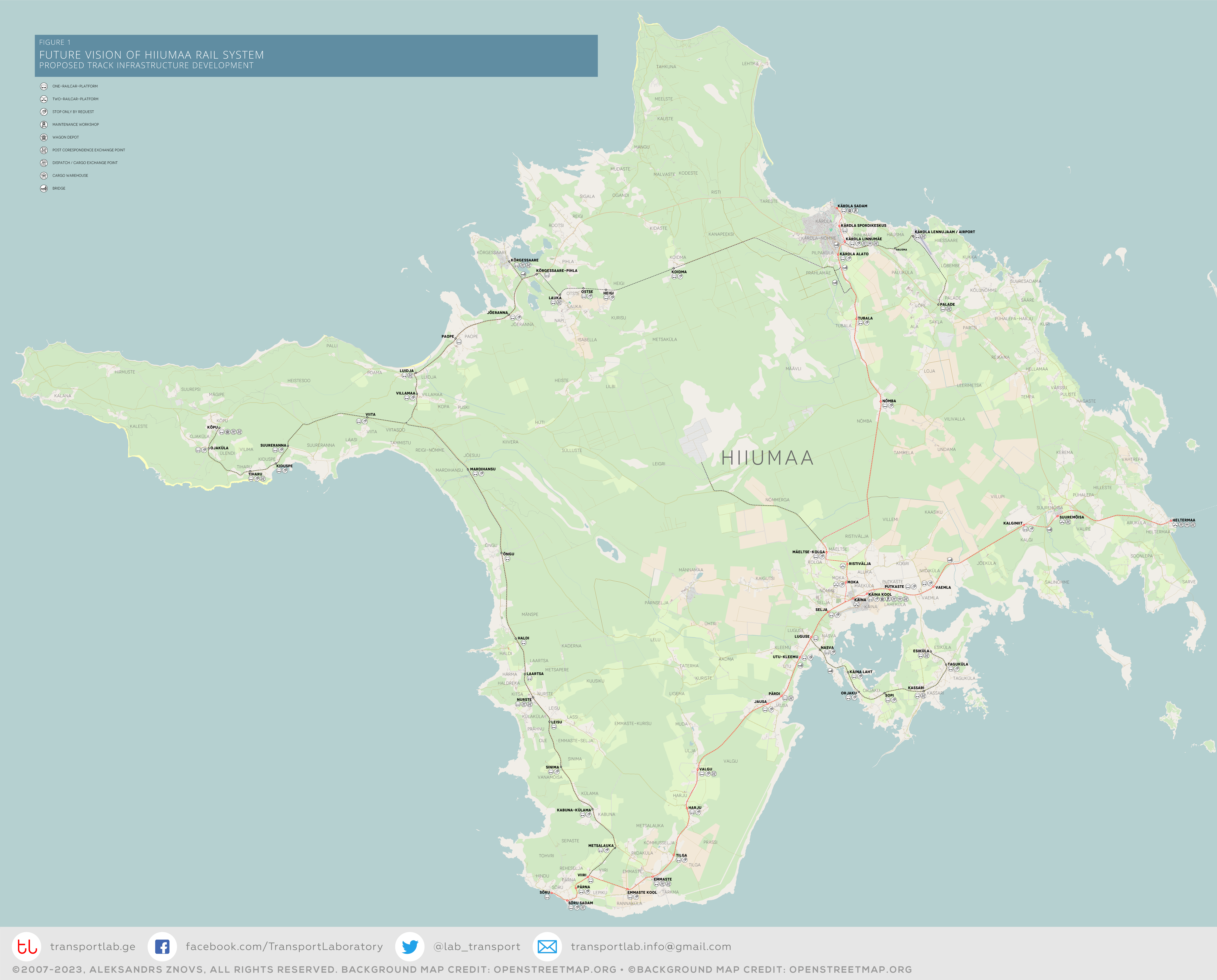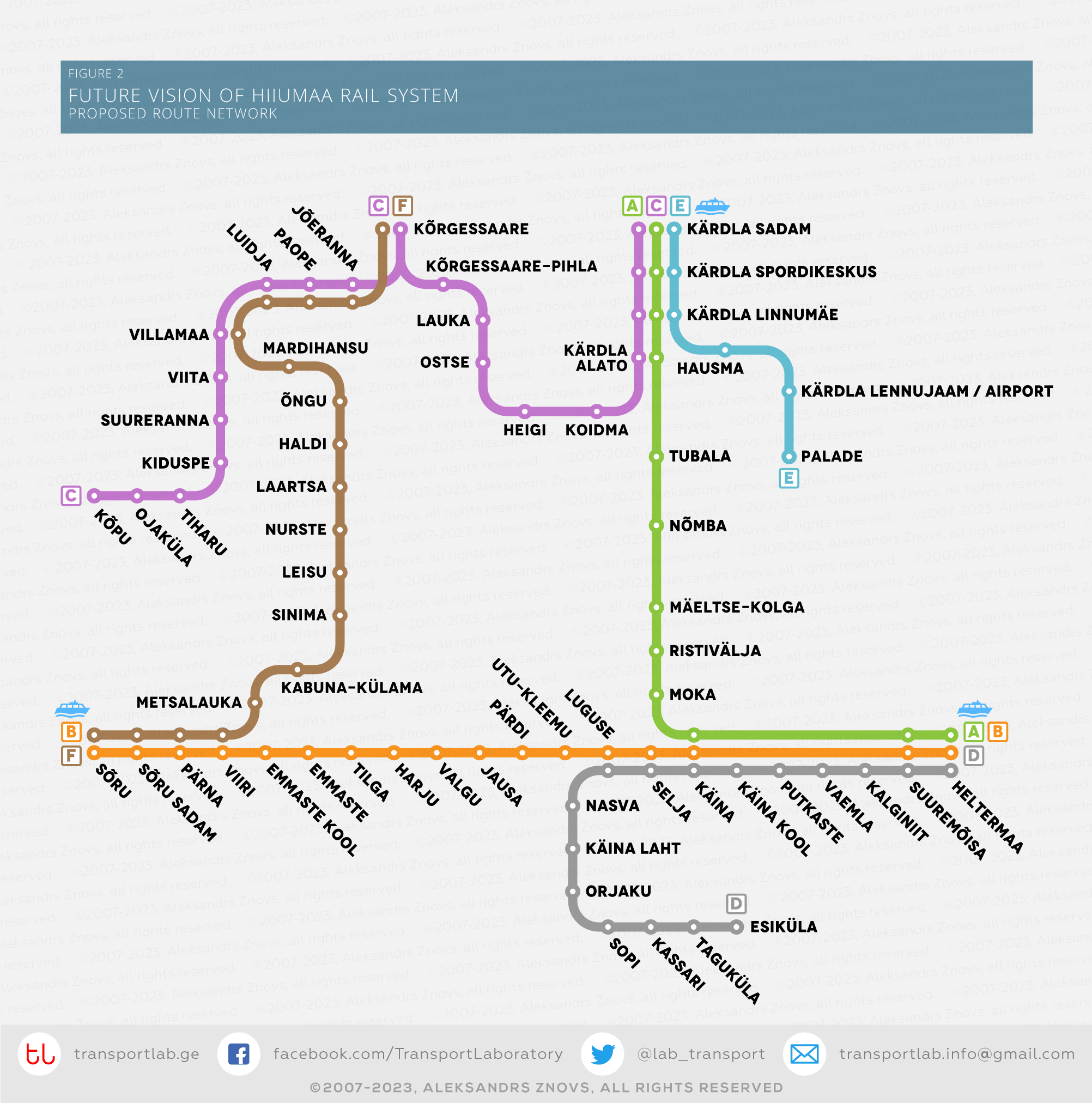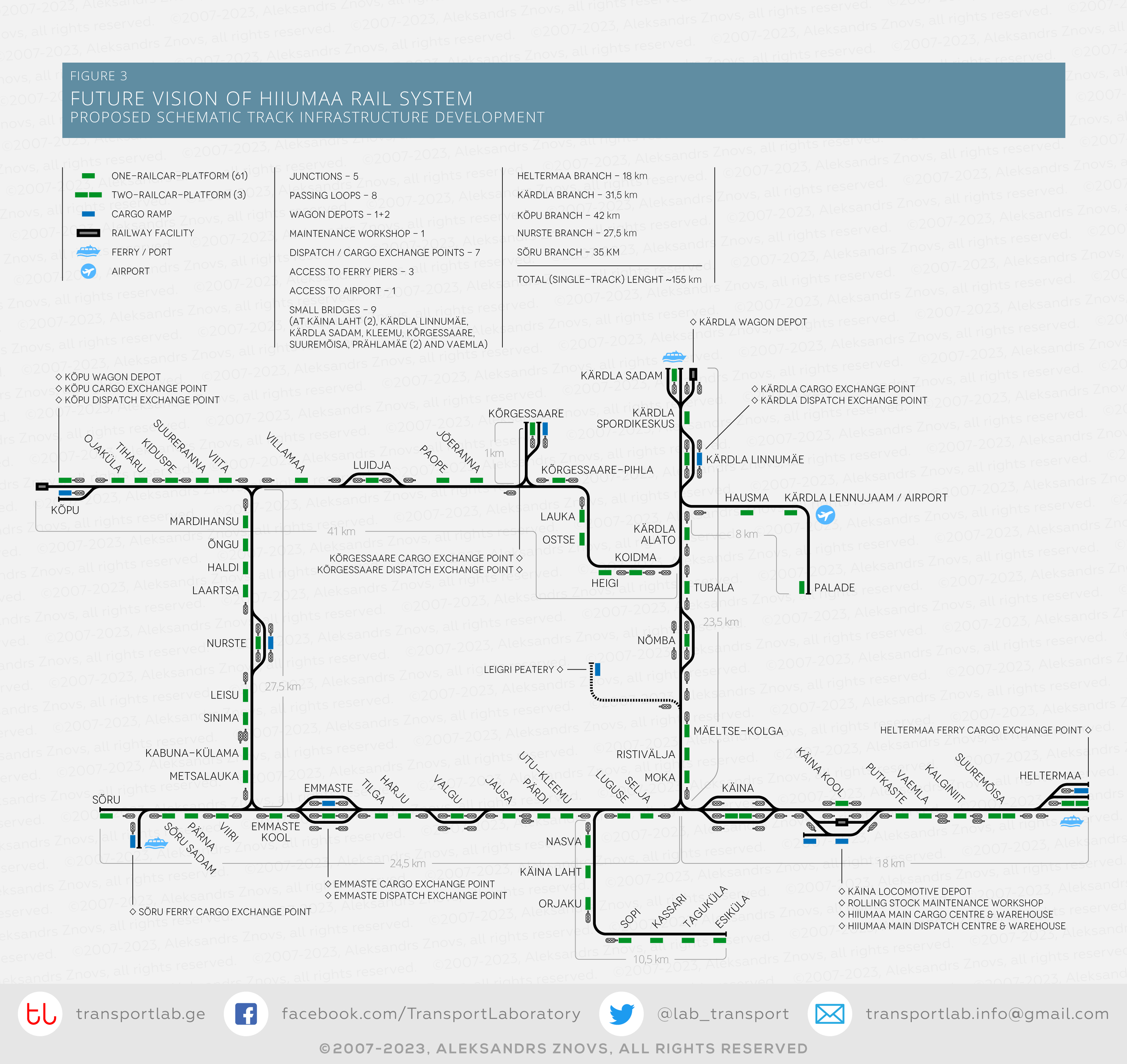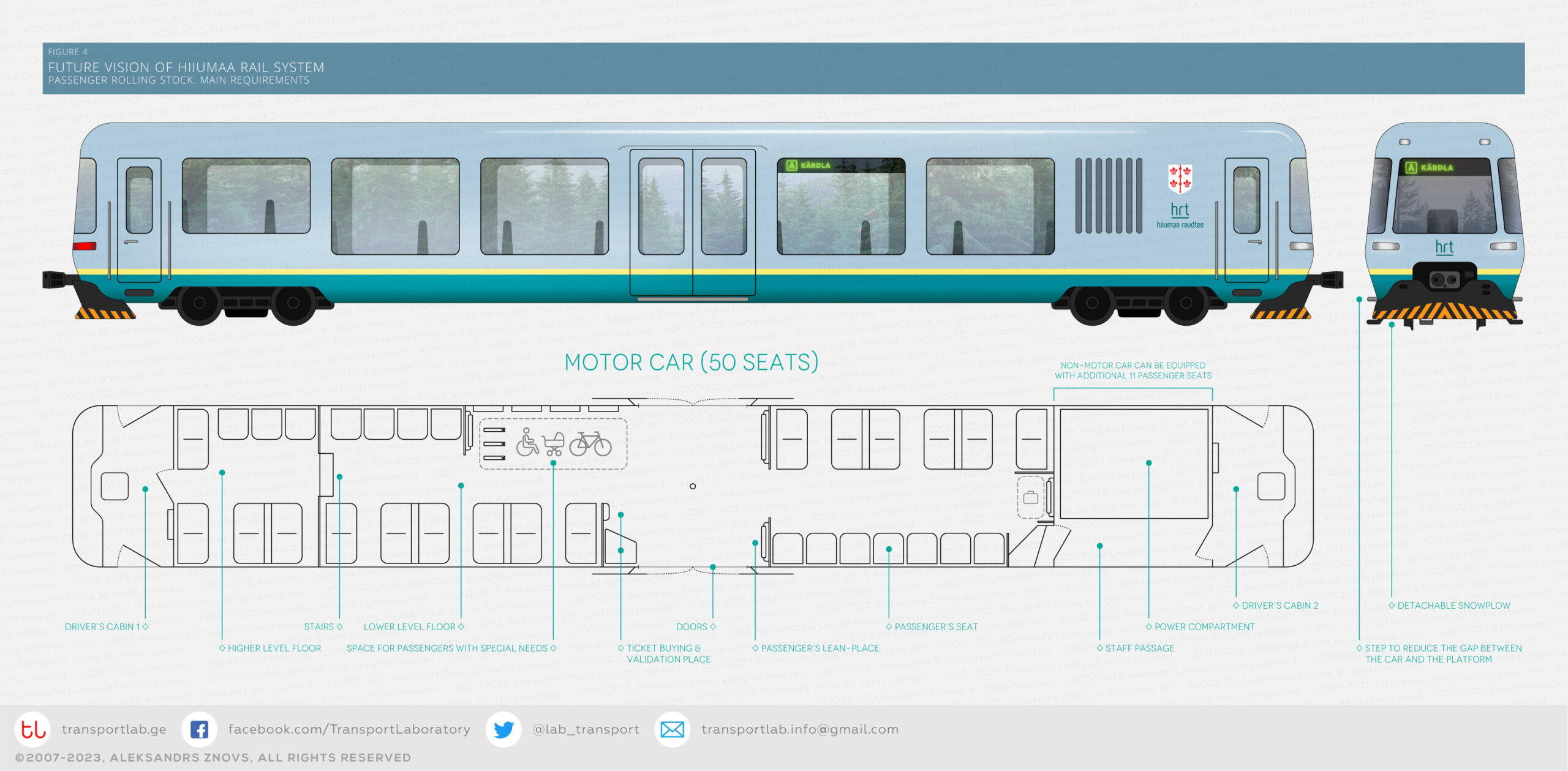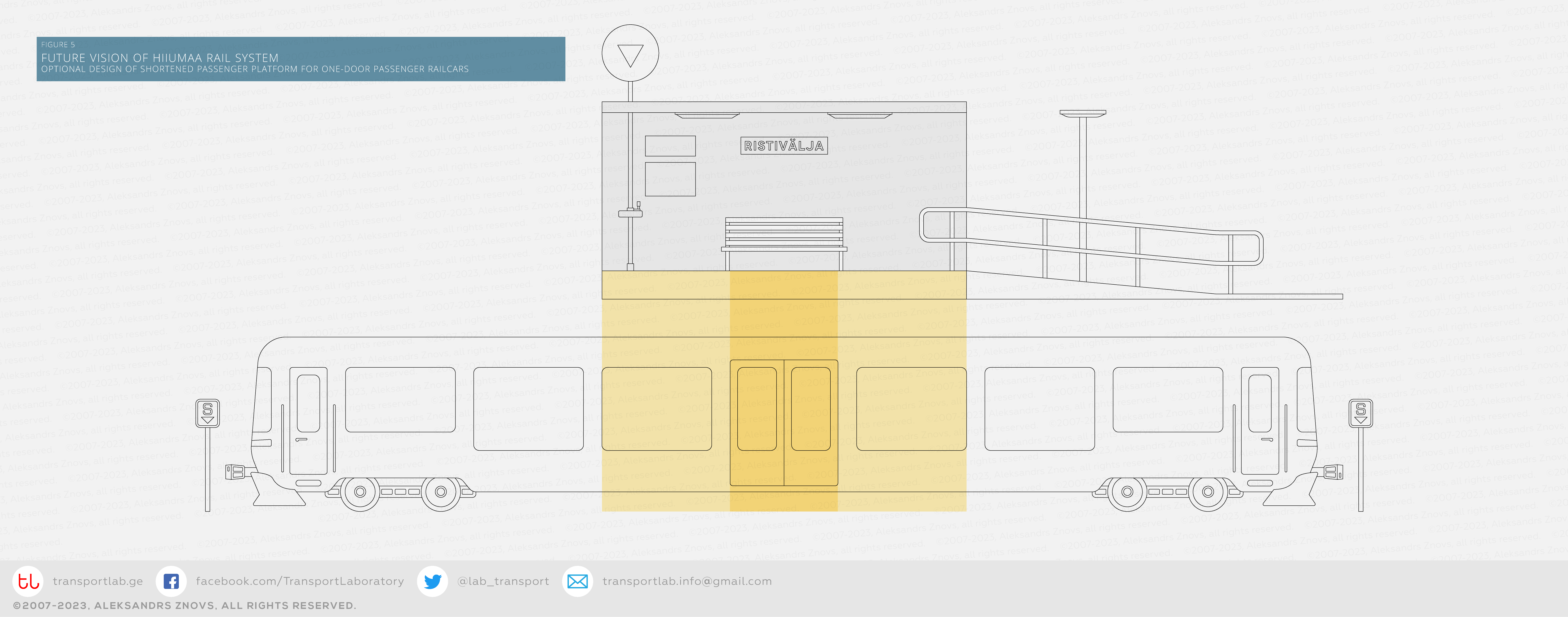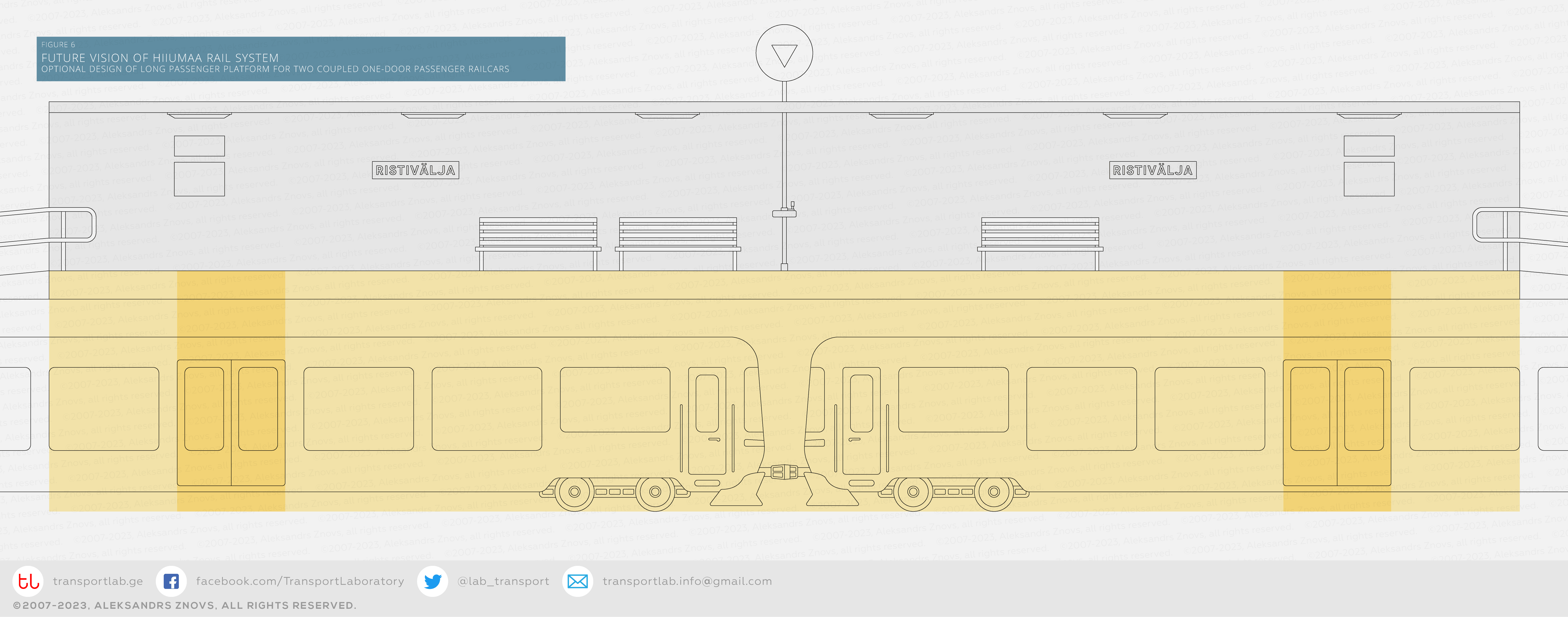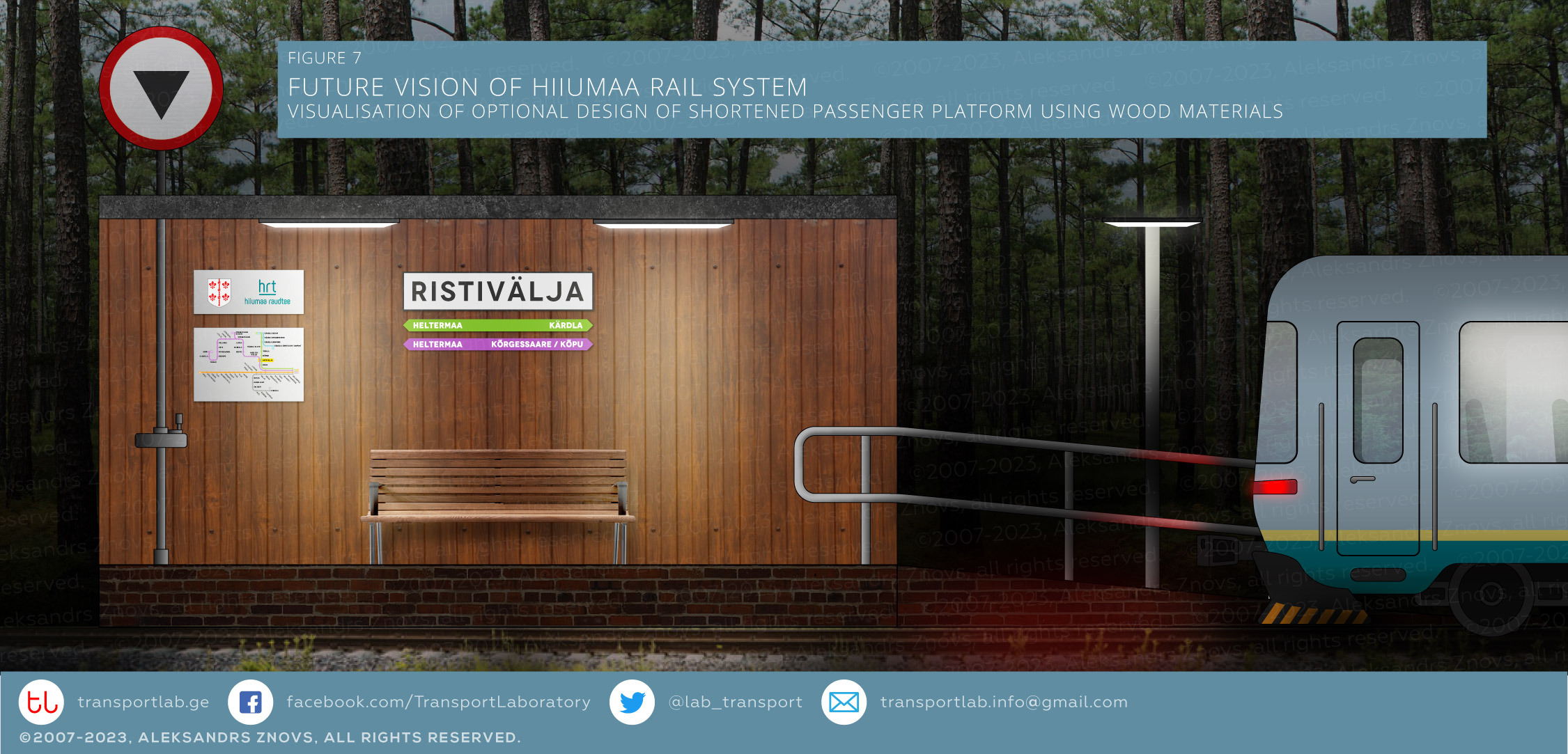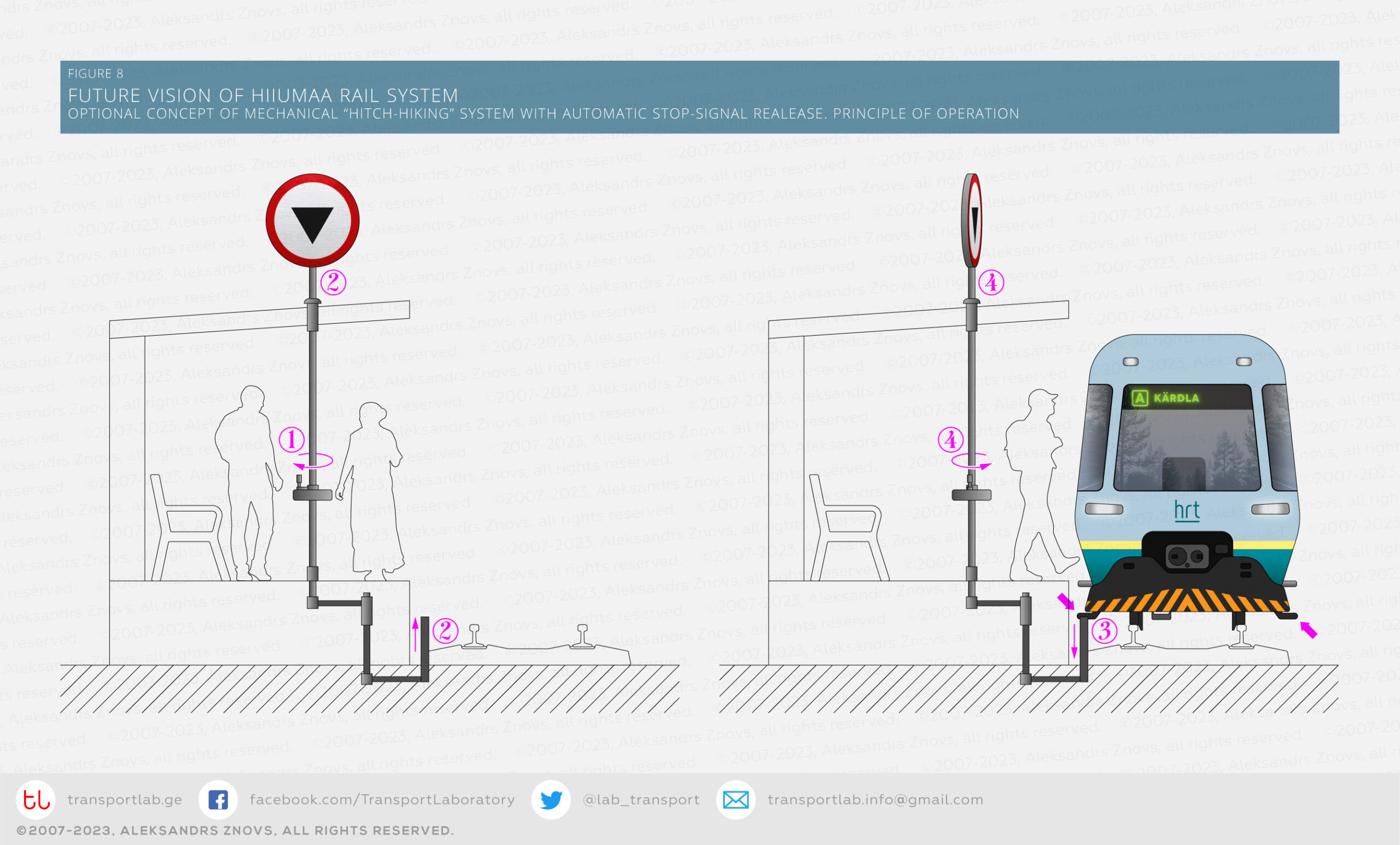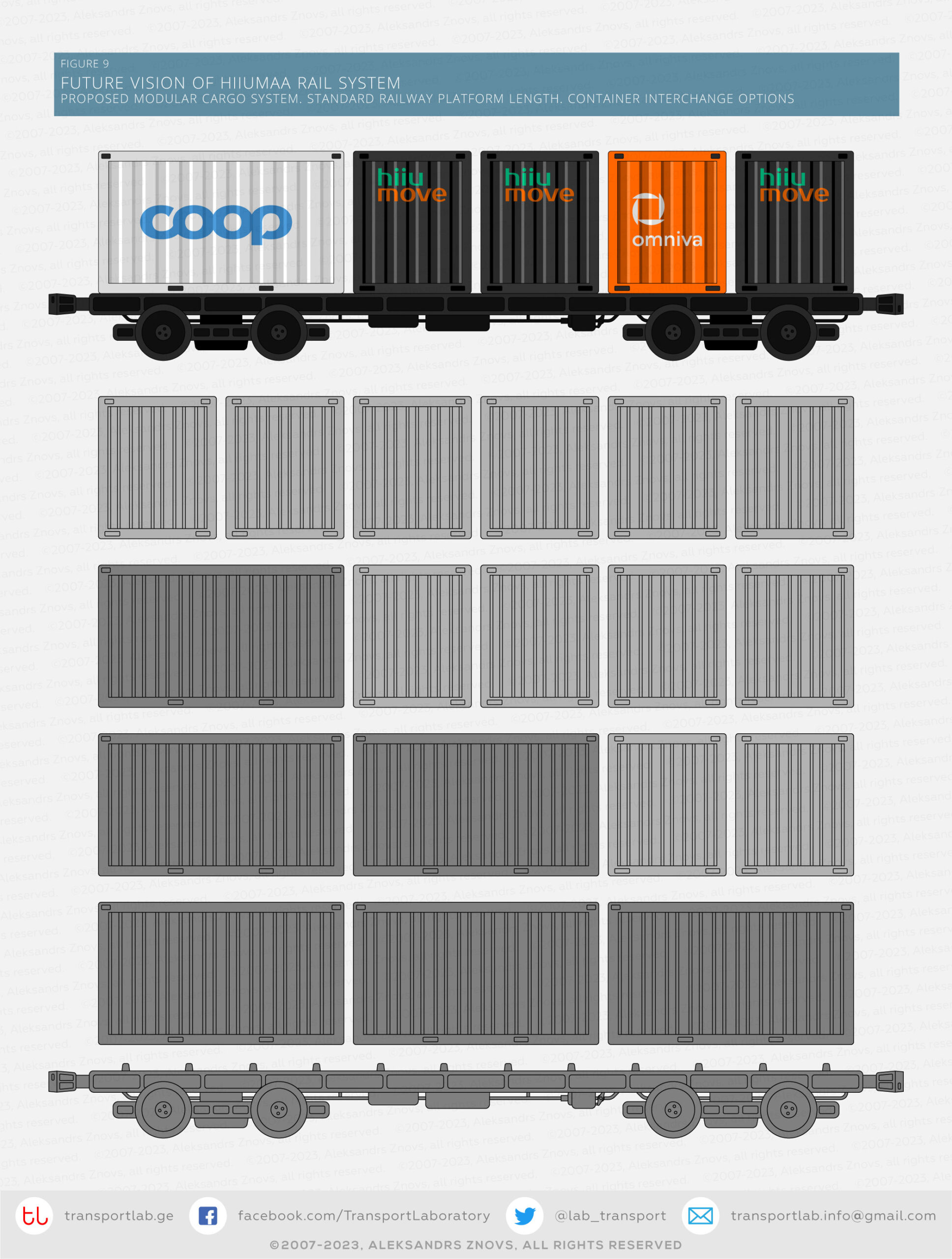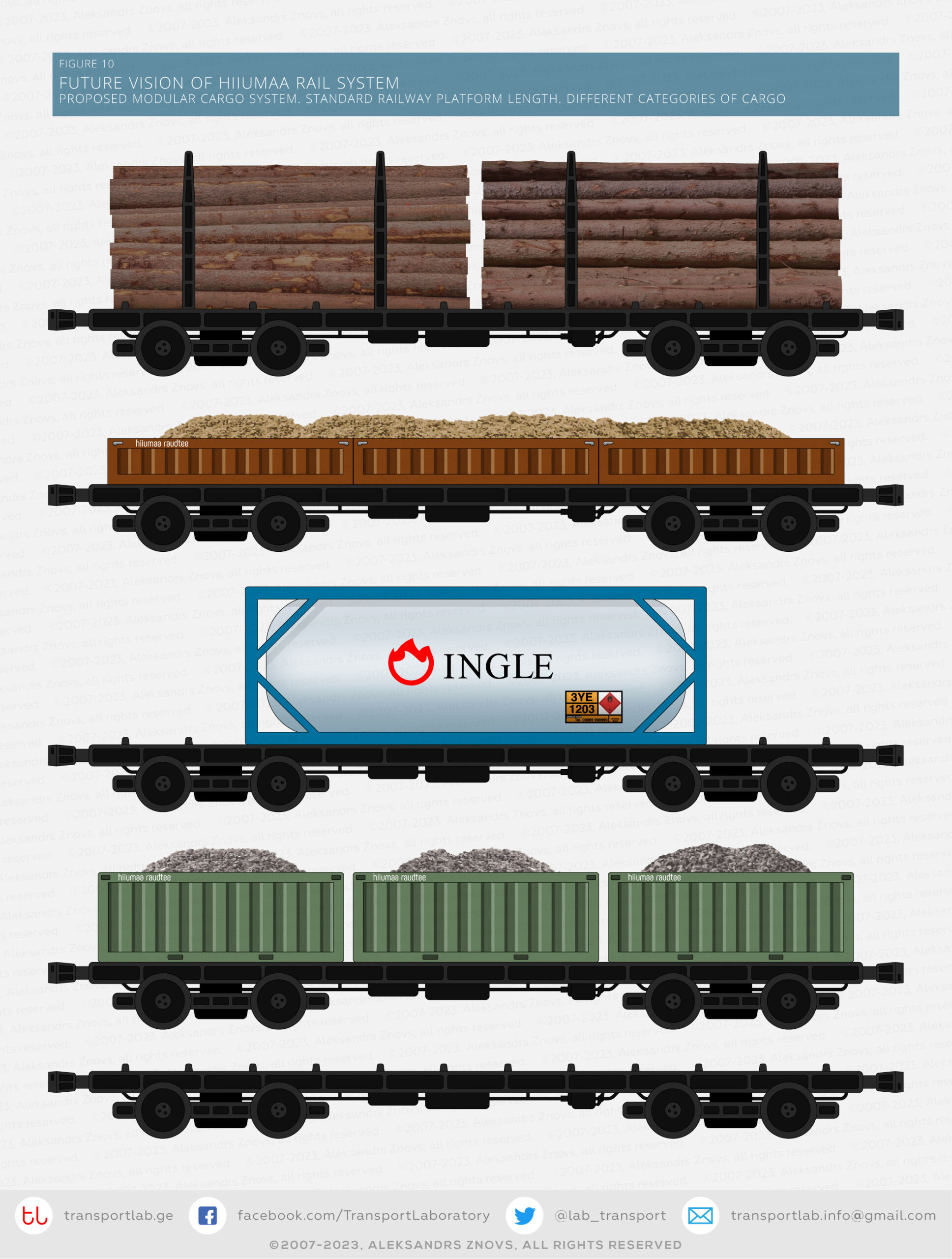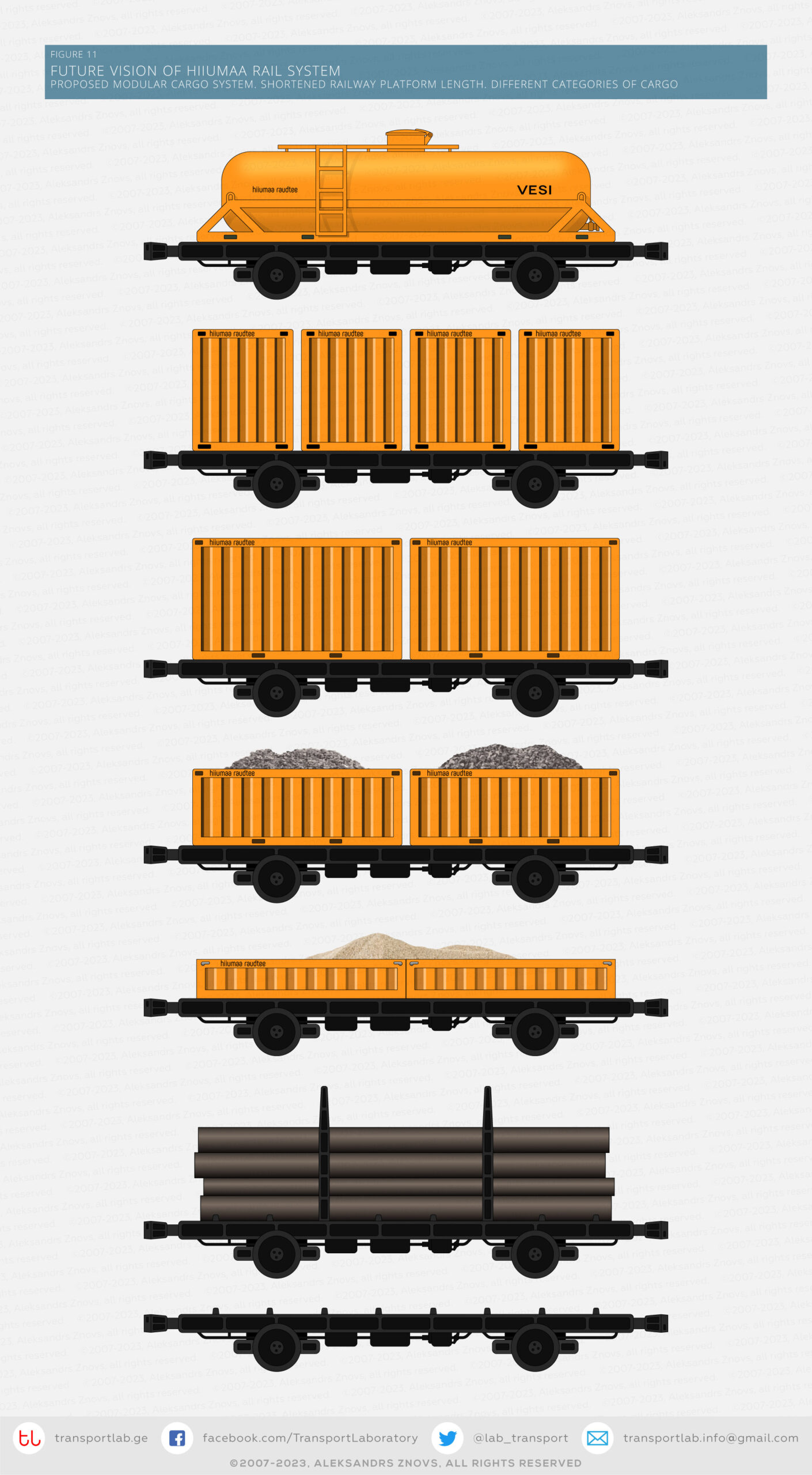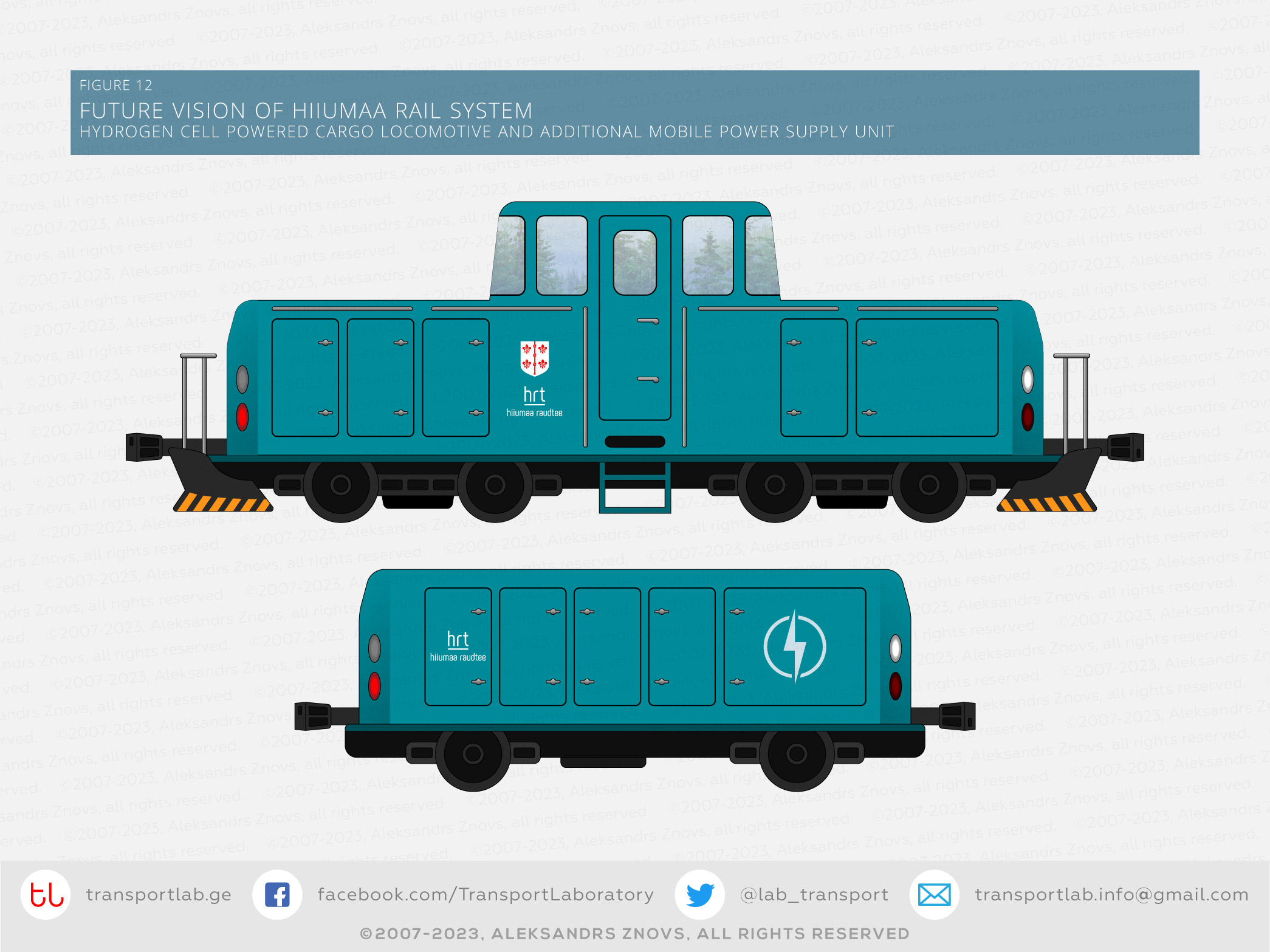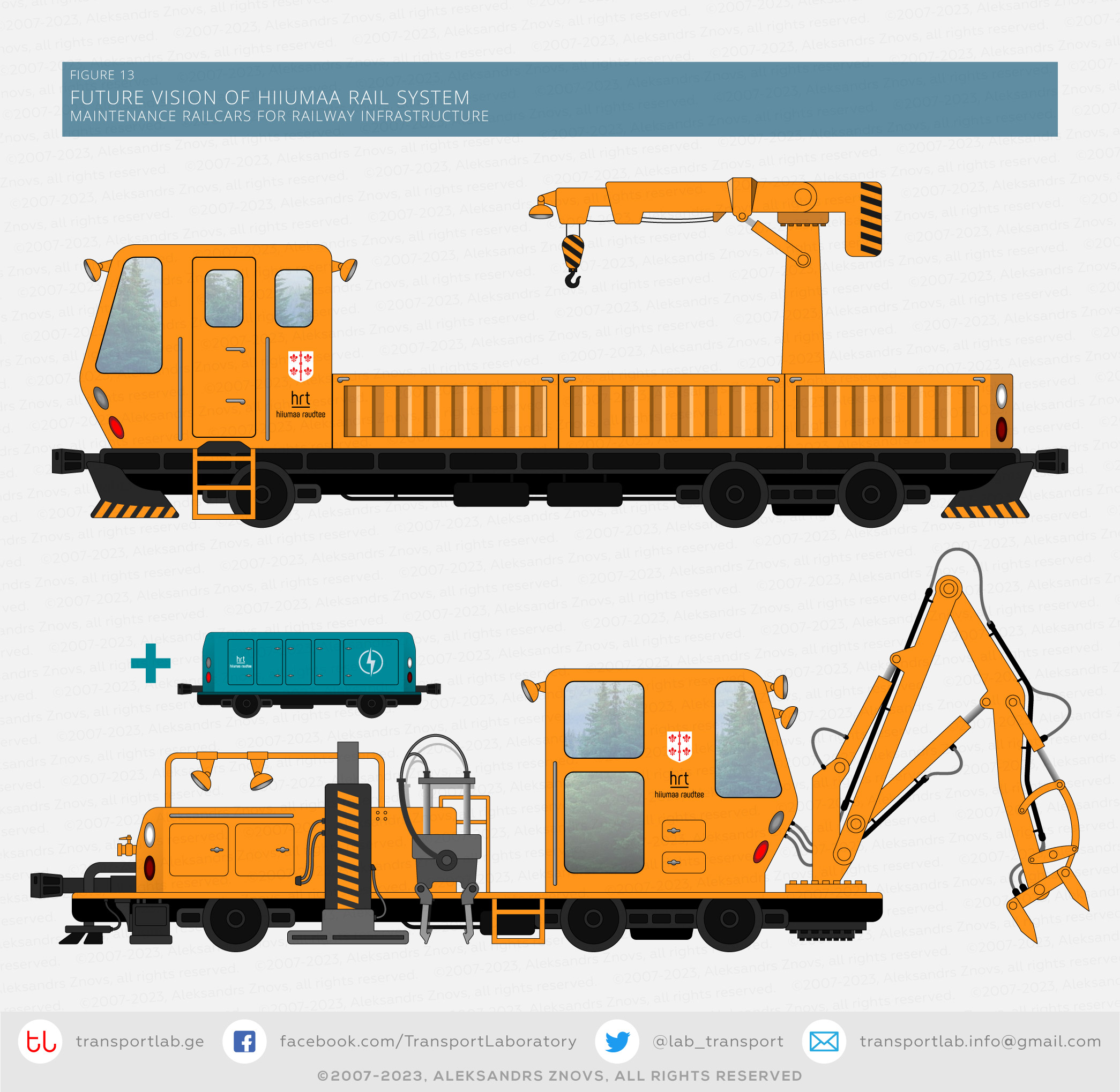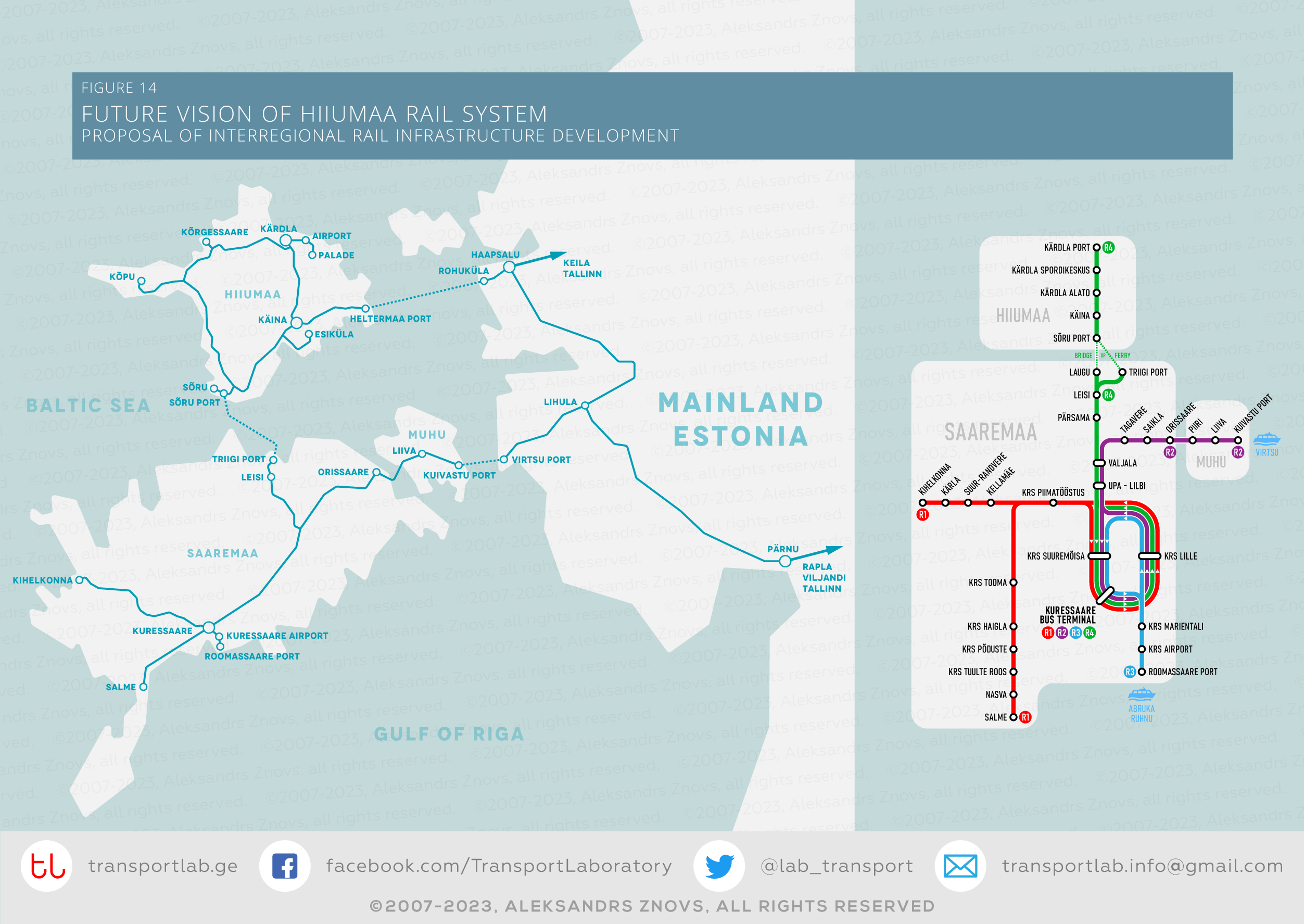Simply why?
When I made a route map for the Rhaetian Railway (Switzerland), I raised the question: How could the modal freight transportation concept I peeped from the Swiss guys could be implemented in the other part of the Europe and how it could change the local lifestyle. How smooth it can coexist with the public transit needs.
Avoiding the particular delving into the expediency (let the economists do this!) of building such a cumbersome infrastructure facility as a railway, I literally randomly chosen the the Estonian island of Hiiumaa, which, according to statistics, is the most economically underdeveloped region of the country and it never had a railway. I will not argue that my next fantasy at the moment is a some kind of utopia, but for this purpose this section exists – to dream outside the frames. Okay, okay, without the ignoring the common sense.
Let’s imagine we have a target to raise the economic level of this island. First step is to increase local industrial activity and to attract the tourist flow, it would cause the growth of the economically active population and blah-blah-blah. The appropriate environmentally friendly (than road transport) infrastructure for public transportation and freight is the way and blah-blah-blah too. So, railroad!
Our luggage
The population of the island is not dense – only 9.500 people (2019). The majority of inhabitants are concentrated on two areas: Kärdla (the administrative capital) and Käina on the south. The island has a main ferry port at Heltermaa – it connects the island with the mainland. The smaller one ferry port is at the Sõru Village, which has a connection to Triigi port on the Saaremaa Island. So the first (the longest) line could go from the Heltermaa, through Käina to the Sõru, and the second one would connect the town of Käina with Kärdla. On the Figure 1 you can see both proposed main lines (marked in red). Desktop: click on the image, then right-click to open the full resolution image. Mobile device: tap on image for further zoom-in/zoom-out, tap and hold to choose to open full resolution image on the new tab.
By choosing these two lines as a starting point we can assume the location of certain objects related to our railway. The entire flow of cargo from mainland Estonia passes through the port of Heltermaa, so the central sorting point could be a junction station in the town of Käina, from which the cargo delivery will begin its way to the other parts of the island both by rail and by road. I suppose the Hiiumaa also can take a part of cargo or post flow to and from nearby island Saaremaa, which can slightly help to equalize the economic growth level between the regions. Although, this question is highly discussable.
Ok, back to Hiiumaa! On the same map, you probably have noticed also other railway lines (marked in black). These are of course minor optional lines, but worth considering nonetheless, especially in the case of the growth of economical and tourist activity and the number of inhabitants. Let’s start with a small local branch line serving settlements located around Käina Bay. Another 8 km long line could link the island’s main town Kärdla with the airport and Palade Village.
As the next priority, I would mention the branch connecting Sõru Port and the northern settlement of Kõrgessaare or the option of a branch line from the capital town Kärdla, through Kõrgessaare and to the western point at Kõpu Village. If we take a look at the schematic diagram of all lines with all railway stations, it might look something like this:
I am not a railway specialist, but just a “couch expert” like many of us and can only use my logic and common sense to guess the demands and location of the infrastructure on our hypothetical railway. In general, in the picture below you can see everything yourself.
Passenger rolling stock and infrastructure
So, for servicing the main two lines, a maximum of two passenger railcars is enough, but for a proposed full network 3-4 railcars. Due to the relatively small flow of passengers and not a tight schedule, the railcars could have only one wide door per side. It also would save a lot on the construction of passenger platforms – they could be a bit longer than the railcar doors. A 50-seat hybrid railcar could run on hydrogen or gas, generating electricity to power motors. Main railcar requirements don’t differ from convenient ones and could look something like in the figure below:
As I already have mentioned the passenger platforms, let’s drop some words about these infrastructural objects. I told you about the railcars with one door per side, so passenger platforms can be quite short. Only in some stations which will serve coupled railcars, the platform length would be longer to serve both. Additionally, some stations can also have cargo ramps for serving modal freight wagons coupled with the passenger train or freight trains themselves.
Of course, it is not worth going into the possible design of passenger platforms now, but it is worth mentioning that these can be stopping points using local natural materials, such as wood and stone. Lighting at bus stops could be completely autonomous, using solar energy.
As part of the economy, the principle of stopping only at the request of passengers can be used in many stations across the island. There is one very old and beautiful way I peeped on the ferry lines of Stockholm Archipelago: the ferry stops at a certain pier with a small number of daily passengers only if the stop signal is turned on prior to the arrival of the ferry. If the signal is not given, the ferry calmly passes by this pier. It can also be used at the stops of our railway, and it will be a purely mechanical option that does not require electricity. Even more – the passing railcar mechanically switches off the stop signal, so passengers must control only switching it on. Everything ingenious is simple!
Freight rolling stock. Modal system
The cost-efficiency of passenger rail networks is a big question if it is not backed by stable subsidies from the private sector or governmental institutions. The best way to keep alive the entire railway network is to add powerful freight services and try to use them for as many ways of cargo as possible. For example, the local railway could serve postal, retail distribution and other delivery needs. Together with local road electric transportation cars, it is possible to form an effective, environmentally friendly delivery system.
For flexibility, money and time-saving purposes, the best solution is the modal system widely used, for example, in Switzerland. It consists of using one standard rail platform unit, on which can be easily mounted different size freight containers, cisterns, refrigerator units, bunkers etc. These wagons can be safely used when coupled with passenger railcars. Some containers (mostly for delivery items) can be easily transferred from the train to local delivery cars and vice versa. We can see something a bit similar every single day, but these are heavy containers.
For technical and maintenance purposes of the railway, the shorter type of rail platform units can be used. The cisterns, containers and bunkers, which are used on longer units, are fully compatible.
Locomotives and other stuff
No doubt, passenger powered-railcars cannot fully meet the requirements of freight transportation needs, especially for shunting purposes and heavy-load train cases. Therefore, besides the ordinary locomotives, complementary mobile power units can be invented to use as the additional power supply for heavy-duty cases or railway infrastructure non-powered mobile maintenance units.
Finally, it is worth adding that any railway network, no matter for what purpose it was built, will be effective only if there is an increase in some kind of industrial activity, tourism flow growth or appropriate local environment to attract new inhabitants. Otherwise, the bare railway line will quickly fall into disrepair and will not have any effect even though it was capable. In addition, it is always worth thinking globally. Well, imagine that other regions, and maybe even neighbouring countries, will join the idea of building a new railway network! What about the railway and the neighbouring islands of Saaremaa and Muhu? What about the railway line on the mainland? How about if all these parts will work as one network and your train will get to the ferry, which will take you further, where you will continue your trip on the same train? I’ll leave these ideas to your imagination. On this, I say goodbye to you.
Title image credit: visitestonia.ee


